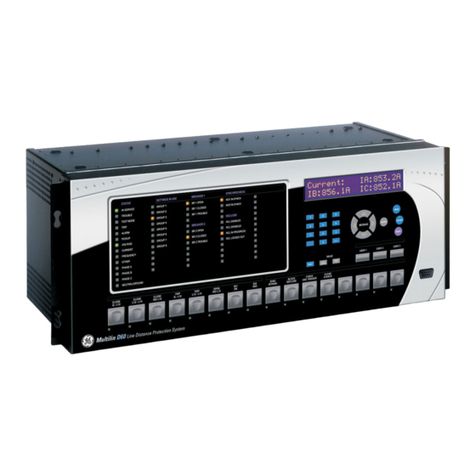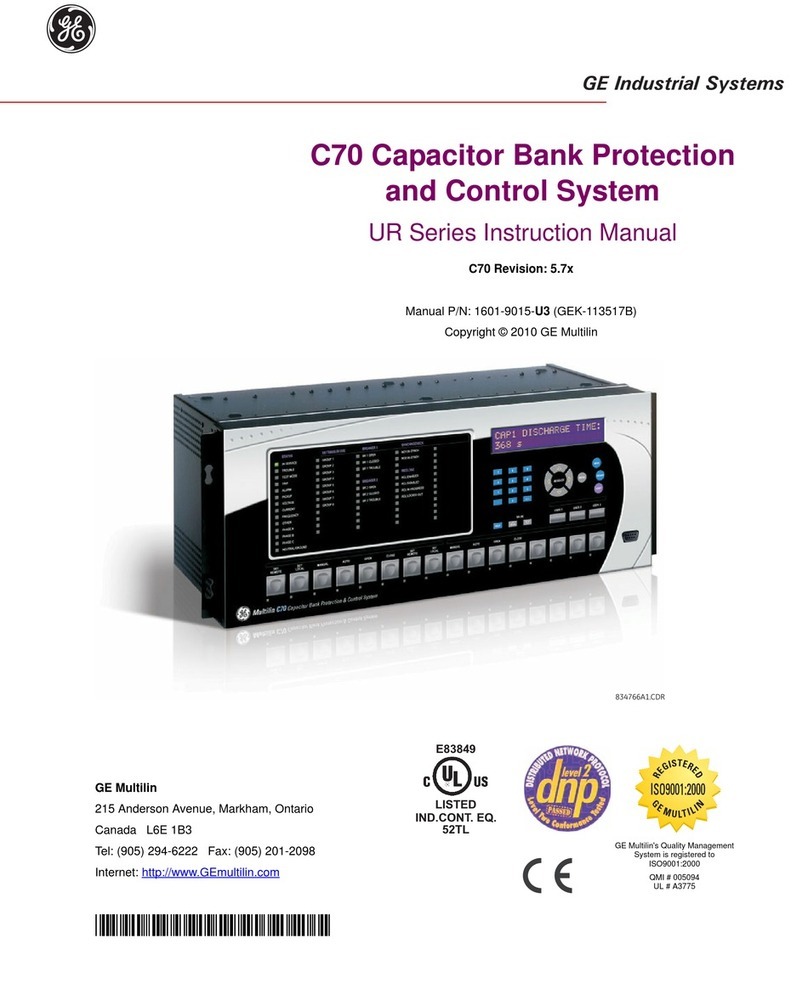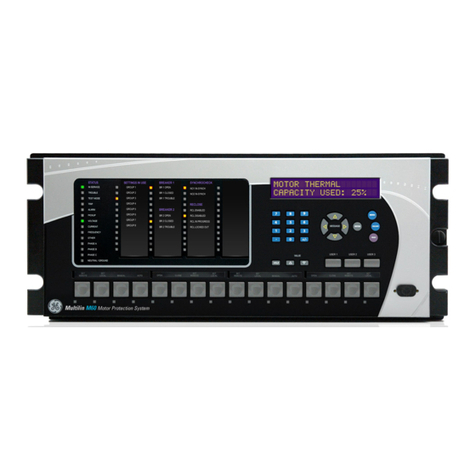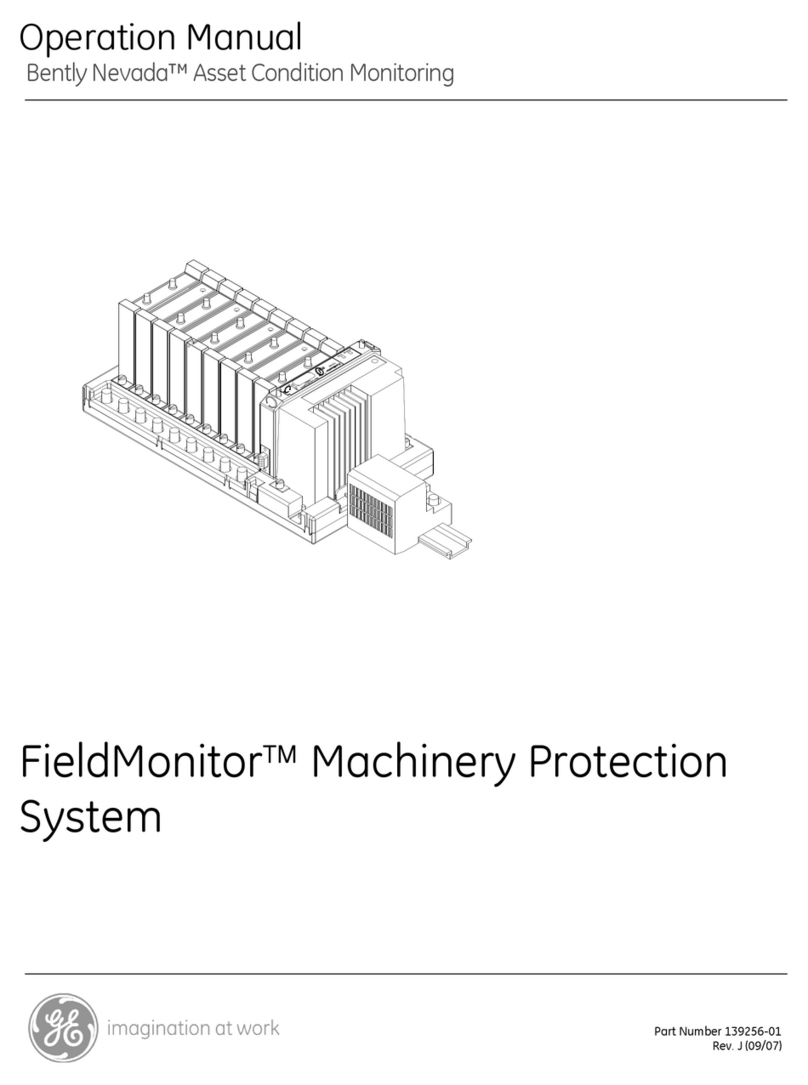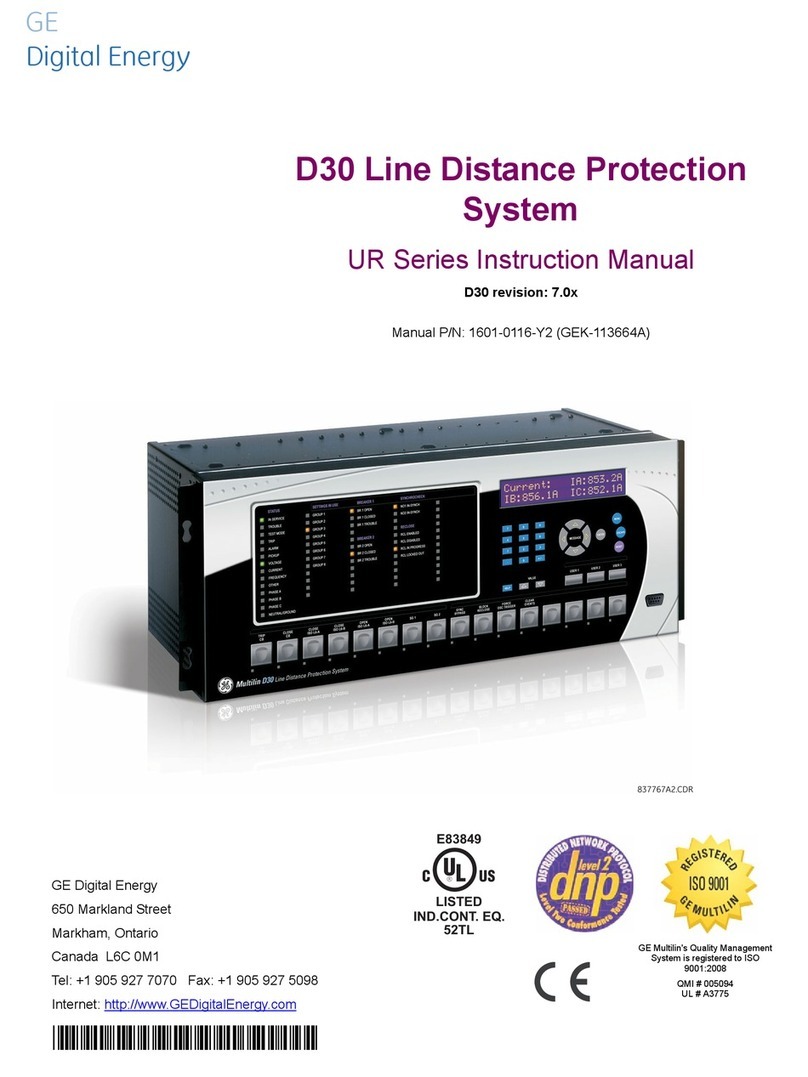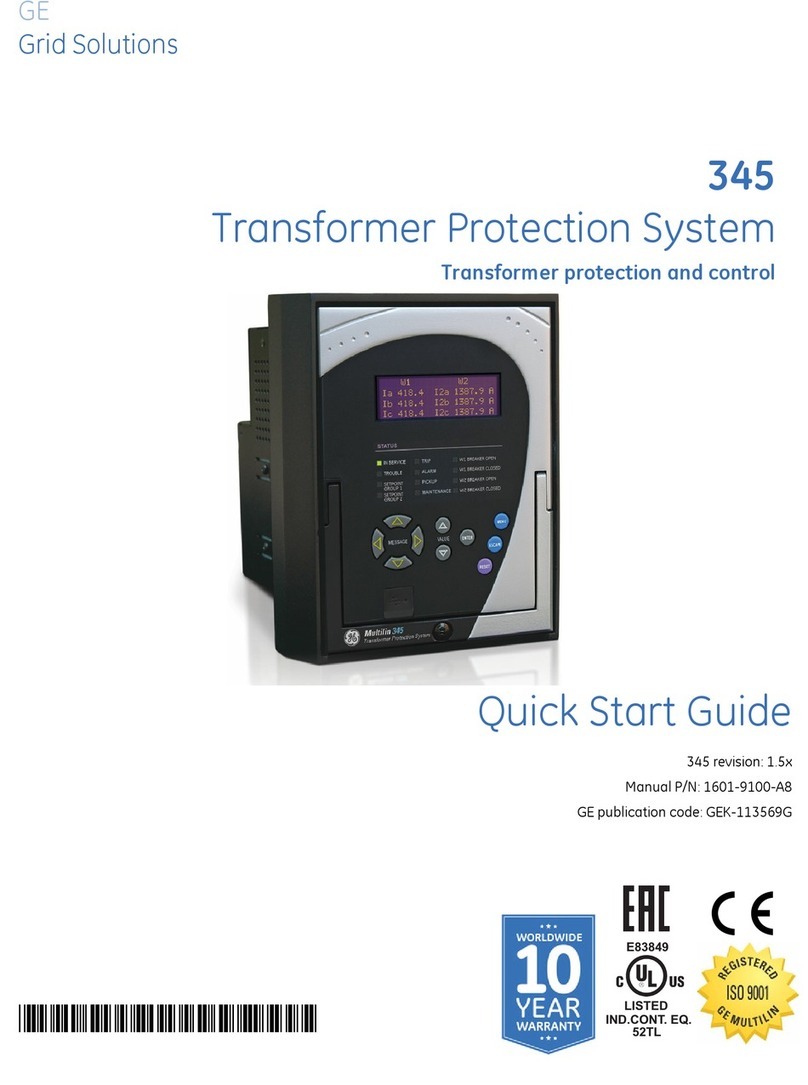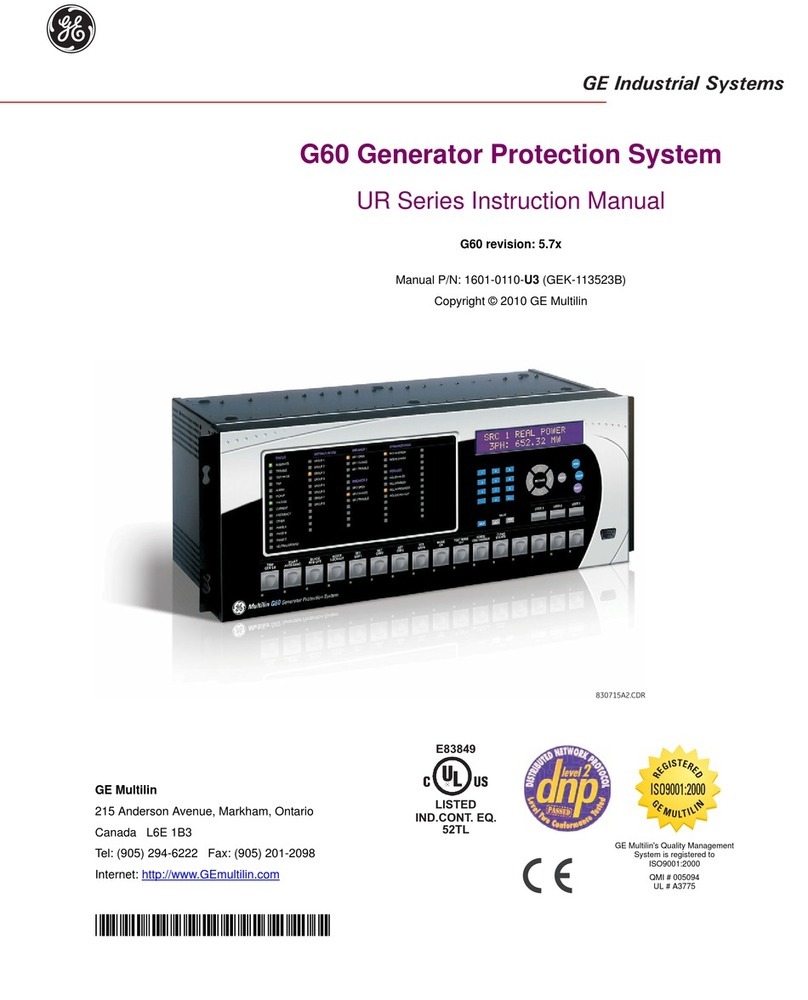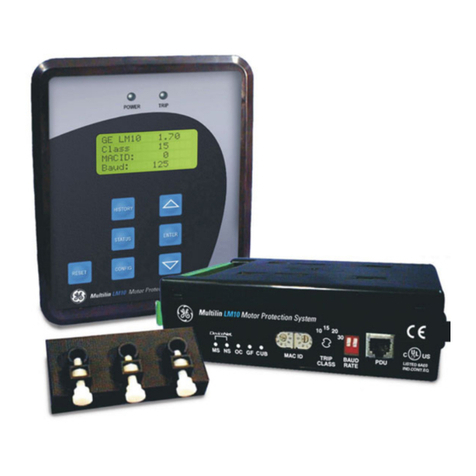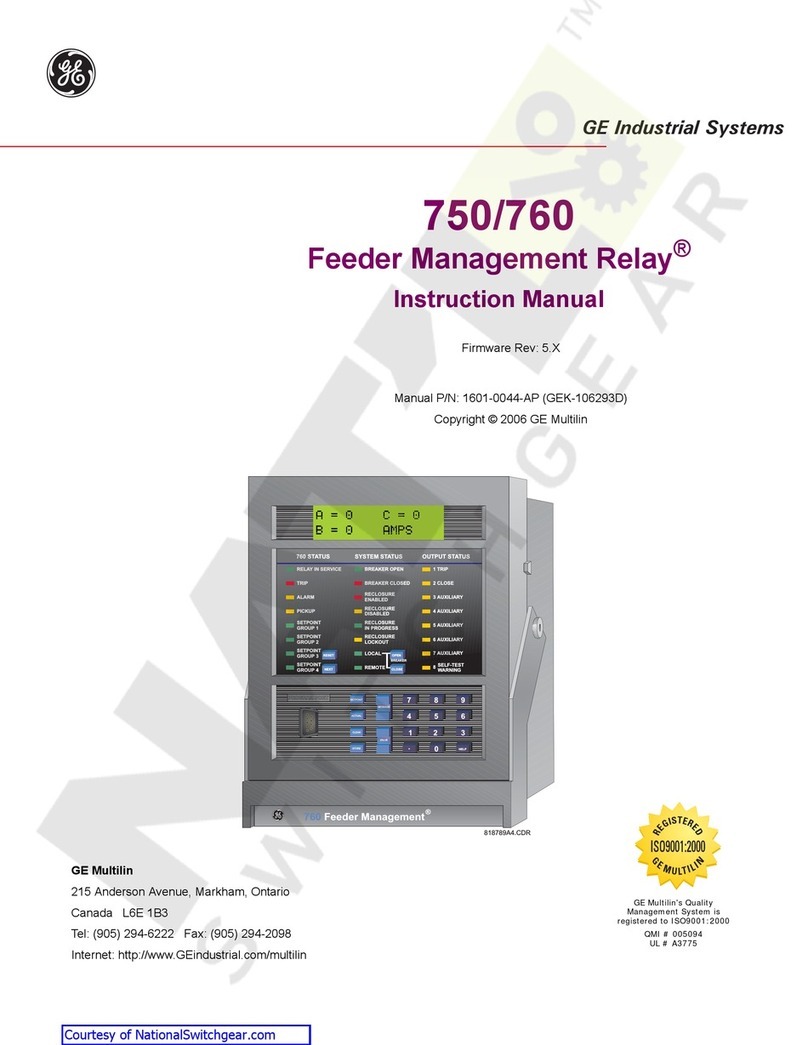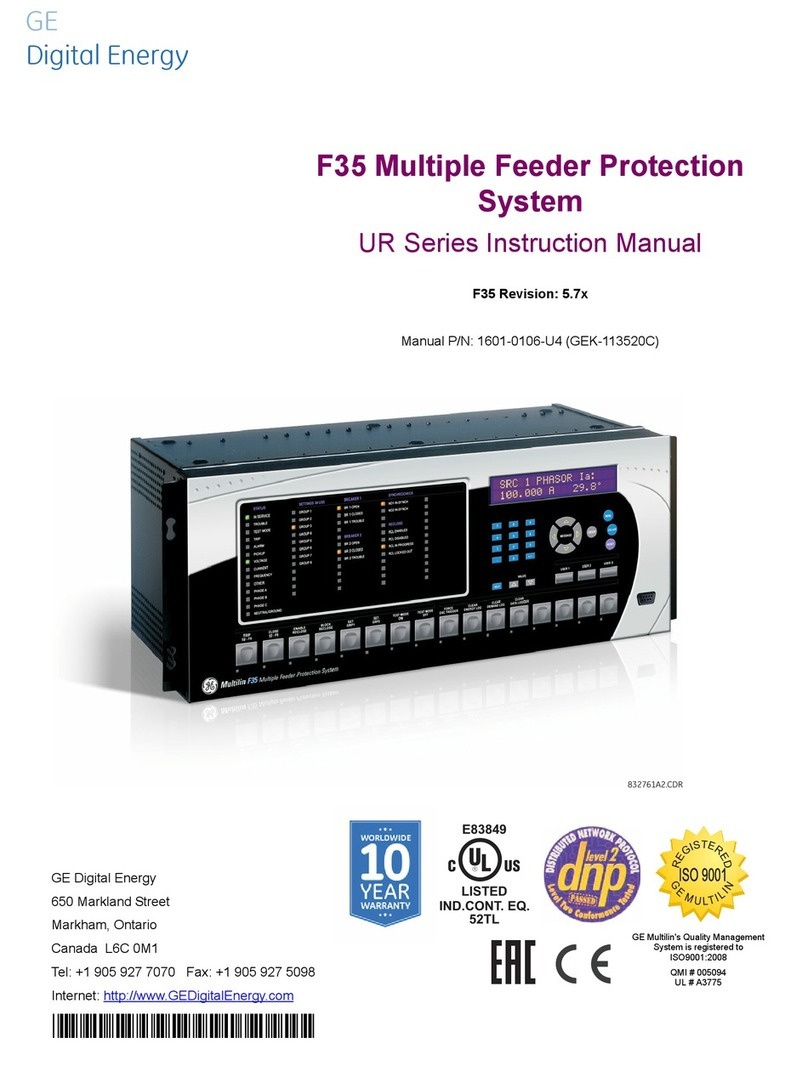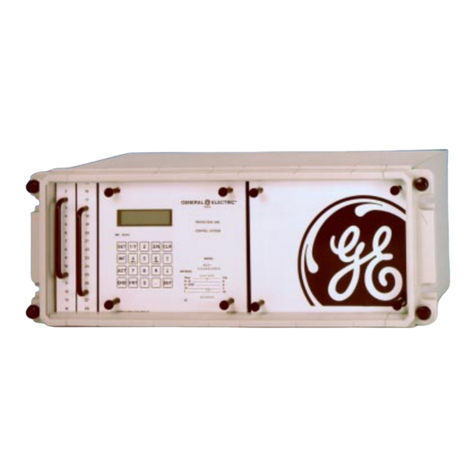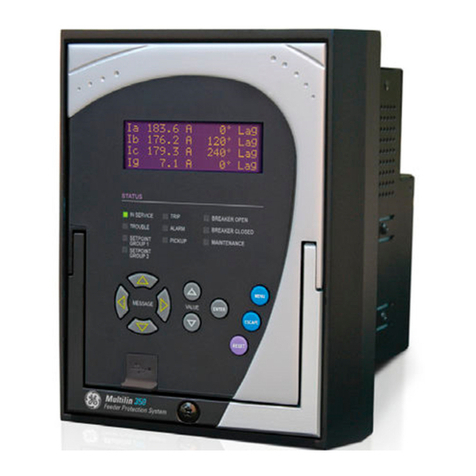
869 MOTOR PROTECTION SYSTEM – INSTRUCTION MANUAL III
PTP Configuration......................................................................................................................................4 - 9
Clock..............................................................................................................................................................4 - 11
SNTP Protocol ...........................................................................................................................................4 - 12
Security ....................................................................................................................................................... 4 - 13
Basic Security ...........................................................................................................................................4 - 14
CyberSentry...............................................................................................................................................4 - 16
Communications .................................................................................................................................... 4 - 23
Modbus Protocol.....................................................................................................................................4 - 23
RS485............................................................................................................................................................4 - 28
WiFi................................................................................................................................................................4 - 28
USB ................................................................................................................................................................4 - 31
Ethernet Ports...........................................................................................................................................4 - 31
Routing.........................................................................................................................................................4 - 33
DNP Protocol.............................................................................................................................................4 - 36
DNP / IEC104 Point Lists ......................................................................................................................4 - 37
IEC 60870-5-104 .....................................................................................................................................4 - 40
IEC 60870-5-103 .....................................................................................................................................4 - 41
IEC 61850....................................................................................................................................................4 - 42
Remote Modbus Device.......................................................................................................................4 - 44
Transient Recorder ................................................................................................................................ 4 - 46
Data Logger .............................................................................................................................................. 4 - 48
Fault Reports ............................................................................................................................................ 4 - 50
Event Data ................................................................................................................................................. 4 - 52
Flex States.................................................................................................................................................. 4 - 52
Programmable LEDs ............................................................................................................................. 4 - 52
Programmable Pushbuttons............................................................................................................. 4 - 55
Front Panel ................................................................................................................................................ 4 - 59
Display Properties...................................................................................................................................4 - 59
Default Screens........................................................................................................................................4 - 60
Resetting..................................................................................................................................................... 4 - 60
Installation................................................................................................................................................. 4 - 61
System.................................................................................................................................................4 - 62
Current Sensing....................................................................................................................................... 4 - 63
Voltage Sensing ...................................................................................................................................... 4 - 64
Power System .......................................................................................................................................... 4 - 65
Motor............................................................................................................................................................ 4 - 66
Setup.............................................................................................................................................................4 - 66
Variable Frequency Drives..................................................................................................................4 - 71
Preset Values ............................................................................................................................................4 - 76
Switching Device .................................................................................................................................... 4 - 77
FlexCurves ................................................................................................................................................. 4 - 80
Inputs...................................................................................................................................................4 - 82
Contact Inputs ......................................................................................................................................... 4 - 82
Virtual Inputs ............................................................................................................................................ 4 - 85
Analog Inputs ........................................................................................................................................... 4 - 87
Remote Inputs.......................................................................................................................................... 4 - 92
Outputs ...............................................................................................................................................4 - 93
Output Relays........................................................................................................................................... 4 - 93
Output Relay 1 (F1) Trip........................................................................................................................4 - 94
Output Relay 2 (F4) programmed as Close.................................................................................4 - 97
Auxiliary Output Relays........................................................................................................................4 - 98
Output Relay 3 (F7) Start Inhibit .......................................................................................................4 - 99
Virtual Outputs.......................................................................................................................................4 - 100
Analog Outputs .....................................................................................................................................4 - 101
Protection .......................................................................................................................................4 - 103
Motor Elements .....................................................................................................................................4 - 105
Percent Differential............................................................................................................................. 4 - 105






